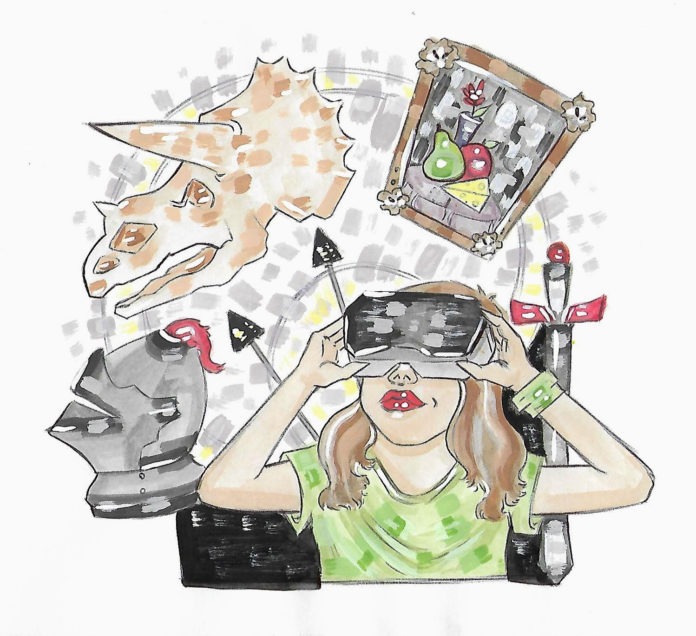If you’re anything like me, one of the most disappointing parts of the COVID-19 crisis has been the closure of all the museums and art galleries. But fear not, there is an online alternative that promises to fill the museum-shaped hole in our hearts: virtual exhibits. Admittedly, I was a little skeptical when I first saw them being advertised. Could visiting a website really compare to visiting in person? I decided to test this newly popular form of entertainment by trying out the online offerings of four Ontario museums.
Let’s start with one of the big players in the Ontario museum field. The ROM is one of the best-known museums in Canada. You can explore some of the building’s interior on Google Arts and Culture, but I was more excited by the museum’s digital collection.
The collections page on their website features 45,525 objects, most of which aren’t on display in the museum. At first I didn’t really see the appeal of browsing objects, but you can use a variety of filters to find ones that interest you. I enjoyed scrolling through the eclectic collection of musical instruments and colourful assortment of rocks and minerals.
Some of the objects come with detailed descriptions, in case you become curious about a particular artwork or artifact. Not all of the objects have detailed descriptions (I found one that simply said “fruit”), but I can’t exactly fault them when they have such an extensive collection. As someone who has visited the ROM many times, I found this to be a fresh and interesting way to view its collection.
When the Bytown Museum says they have a “virtual tour,” they’re not messing around. The entire building has been imaged in 3D like it’s a house for sale or someone’s impressive architecture project.
One of my favourite features is the “dollhouse” view, which lets you see the entire three-storey building at once and click into any area of the building to get a closer look.
This form of virtual tour works well for capturing the beauty of the nearly 200-year-old historic building. You can truly feel like you’re visiting the museum by “walking” around all the rooms to learn something new about Ottawa’s history.
They have added some annotations so you can read signs, see high quality photos of artifacts, and watch videos on the TV screens. Not all of the objects have been digitally labelled, but this virtual tour is still a respectable contender in the online museum world.
Whenever I visit a historic site, there are always signs and ropes telling me where not to go and what not to touch. This virtual tour of a rail car doesn’t have any of that.
While not exactly a museum itself, Ingenium owns three of Canada’s national museums: the Agriculture and Food Museum, the Aviation and Space Museum, and the Science and Technology Museum.
This virtual tour lets you explore two rail cars that had a long history of transporting royals and other officials in Canada. It’s made with the same technology as the virtual Bytown Museum, and it works just as well.
I had a great time peering into bedrooms, sitting areas, bathrooms, and much more. It’s great fun to click your way through the rail cars, imagining what it was like to stay on this train when it was still being used.
The real-life version of the rail cars now lives in the Ingenium Centre, which is currently under construction. This virtual tour is not just a close approximation of a real life experience—it lets you have an experience that you can’t have in real life yet.
Digital Agnes is a project from the Agnes Etherington Art Centre, an art museum at Queen’s University. Currently, their website contains three virtual tours that allow you to see inside multiple rooms of their art gallery.
I was most impressed by the more recent two, from the spring and fall of 2018. They come with an interactive map that lets you jump around to different spots in the gallery and see rooms from different vantage points. The winter 2018 virtual tour has labels that you can see by hovering your mouse over each artwork, and I wish the other ones did too. Even though you can’t read most of the labels on the walls, these virtual tours helped me feel a lot of the same joy that I do when I visit a physical art gallery. Whether you like contemporary art or more historical pieces, you’ll find something to love in these exhibits.
Surprisingly, these virtual museum exhibits were more innovative than I could have imagined. Next time you’re looking for something new to do, think about the museums you enjoy visiting and check out what they’re up to online.
Featured graphic by Camille Houde.






